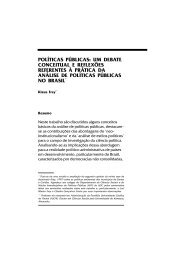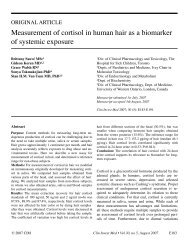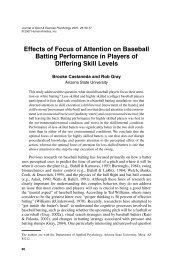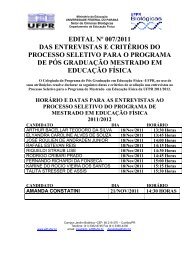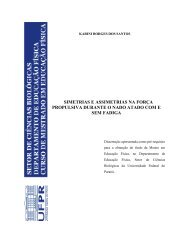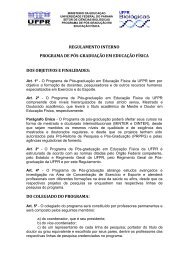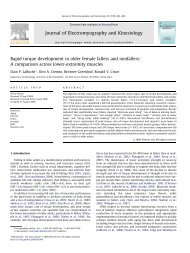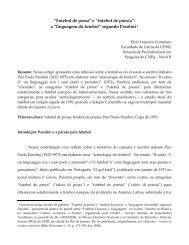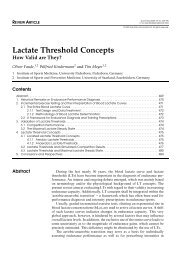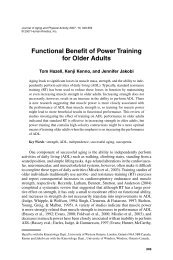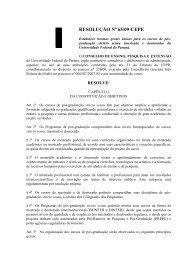BANI SZEREMETA - UFPR - Universidade Federal do Paraná
BANI SZEREMETA - UFPR - Universidade Federal do Paraná
BANI SZEREMETA - UFPR - Universidade Federal do Paraná
Create successful ePaper yourself
Turn your PDF publications into a flip-book with our unique Google optimized e-Paper software.
20<br />
with intense vehicle traffic, confirming the influence of these noise sources on the<br />
soundscapes of these public spaces.<br />
The Jardim Botânico and Passeio Público parks, whose spatial averages of sound<br />
pressure levels were 61.6 and 63.9 dB(A), respectively, are completely surrounded by streets<br />
with heavy traffic and they border on different areas of the city. On the other hand, São<br />
Lourenço and Barigüi parks, whose spatial averages were closer to the legally established<br />
limit, i.e., 55.6 dB(A) and 56.9dB(A), respectively, border mainly on strictly residential areas.<br />
Therefore, heavy street traffic in the surroundings <strong>do</strong>es not affect the soundscapes of these<br />
parks to any appreciable extent since they are not completely surrounded by such streets,<br />
unlike the case of the two former parks.<br />
An analysis of these urban elements and other spatial and acoustic characteristics of<br />
each of the four areas under study indicated that their soundscapes are affected by several<br />
factors. These factors include environmental and urban zoning, land use, main traffic routes,<br />
residential streets, vegetation, type of public transportation, and the park’s typology and the<br />
sounds coming from inside it.<br />
It was therefore found that the identification and study of these factors can serve as an<br />
important tool to define an urban project compatible with the functions and uses of green<br />
urban areas. Provided they are used correctly and are based on proper planning and<br />
management, these factors can promote a greater sense of acoustic comfort. The assimilation<br />
of these factors also demonstrates the importance of interdisciplinarity in the study of<br />
different soundscapes. In other words, assessments of the sound environment should not be<br />
based solely on acoustically measurable data, but should include the analysis and correlation<br />
of other parameters.<br />
The results of the interviews clearly indicate this need. This method enabled us to<br />
discover how people perceive the soundscape of the parks and to gain a better understanding



